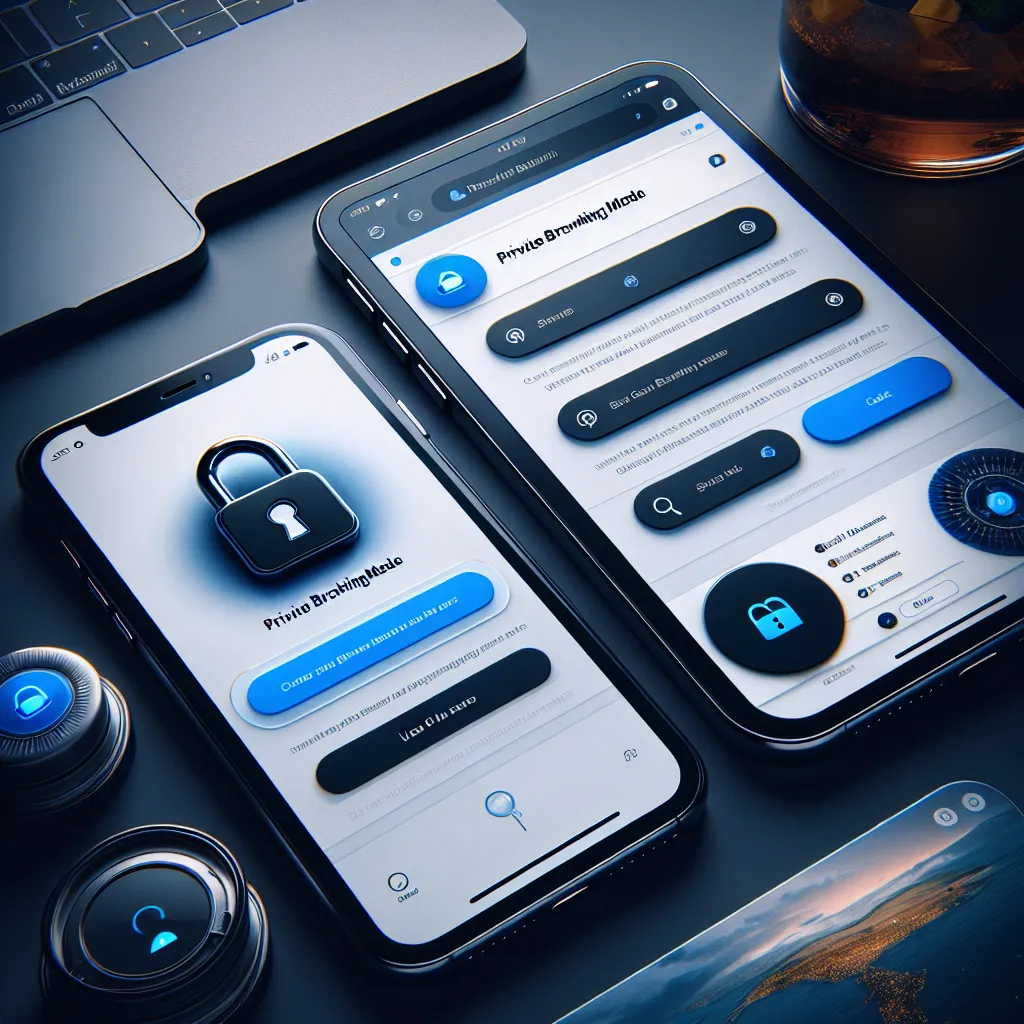
Surfing the web in stealth mode has its perks, particularly if you’re trying to keep your online activities under wraps. Whether it’s hunting for a surprise gift without leaving a digital footprint or ensuring that your searches don’t return to haunt you, Private Browsing on Safari offers a cloak of invisibility. However, like any tool, it’s not without its caveats, especially when it concerns the younger web surfers in the family. Let’s dive into how you can toggle this feature on and off on your iOS and macOS devices, and why sometimes, turning to a VPN like downloading the ForestVPN app from the Apple or Google store might be your best bet for absolute privacy.
Flipping the Switch: How to Enable and Disable Private Browsing on Safari
On Your iOS Gadgets
Step 1: Kick things off by launching Safari. You’ll find yourself on familiar turf in no time.
Step 2: Eye the squares icon lounging at the bottom right. A tap here and you’re in the “Tab View.” If it’s a barren tab land, hit “Start Page”; otherwise, it’s the “X Tabs” for you.
Start multiple private tabs if you fancy – the more, the merrier.
Step 3: Tap “Private” in the Tab Groups menu, and voilà, you’ve cloaked yourself in digital invisibility.
Exiting is just as easy. Retrace your steps, select “Private” again, and you’re back to normal browsing.
On Your macOS Devices
Step 1: Safari awaits on your Mac. A click away, and you’re in.
Step 2: The “File” menu at the top hides “New Private Window” in its dropdown. Click or use the quick-draw shortcut Command + Shift + N.
Open as many tabs as you need; there’s room for everyone.
Step 3: Exiting? Just close the private window or start a new regular window.
Note: Mixing private and normal tabs in the same window is a no-go, but feel free to open a new private tab with Command + T.
Setting Private Browsing Safari Mode as Your Default
Craving privacy round the clock? On a Mac, you can set Safari to always start in Private Browsing mode. Sadly, iOS users can’t join this party.
Step 1: Safari’s preferences are your first stop.
Step 2: Under “General,” tweak “Safari opens with” to “A new private window.”
And there you have it – Safari’s ready to guard your privacy from the get-go.
Disabling Private Browsing Permanently
Not everyone’s a fan, especially when it comes to monitoring what the younger audience browses. Disabling it permanently is a breeze, thanks to the Screen Time settings on your device.
On iPhone and iPad
Step 1: Dive into Settings, find Screen Time, and tap on Content & Privacy Restrictions.
Step 2: Enable Content & Privacy Restrictions and select Content Restrictions. Then, tap Web Content and pick Limit Adult Websites.
Bingo! Private Browsing is now a thing of the past.
On a Mac
Follow similar steps by heading into System Preferences and then Screen Time. Adjust the settings under Content & Privacy to restrict adult websites, effectively disabling Private Browsing.
Why Private Browsing Safari Mode Deserves Attention
Using Private Browsing on your devices isn’t just about dodging digital footprints; it’s about reclaiming a slice of your online privacy. Here’s why it’s worth your time:
- Privacy protection: What you browse in Private Browsing stays in Private Browsing.
- Cookie control: Say goodbye to trackers.
- Ad targeting prevention: Keep those pesky ads at bay.
- Shared device sanity: Keep your browsing yours on communal gadgets.
- Saving money: No more price hikes based on your browsing history.
The Limits of Private Browsing Safari
But here’s the rub: Private Browsing can’t shield you entirely. Websites, ISPs, and snoopers can still peek into your online antics. Even downloads and bookmarks made in stealth mode stick around. And your IP address? It’s still out there for the world to see.
Pro Tip:
For a cloak of invisibility that rivals any stealth mode, a VPN is your best ally. Downloading the ForestVPN app for your device adds a layer of encryption that keeps your online activities under wraps. Regularly clearing your browser cache and cookies also helps keep your digital footprint to a minimum.
In Conclusion
Whether it’s slipping into the shadows with Safari’s Private Browsing or fortifying your online privacy with a VPN such as ForestVPN, you’ve got the tools to navigate the digital world on your terms. Remember, in the vast ocean of the internet, staying informed and equipped is your best defense.
Remember to download the ForestVPN app from the Apple or Google store to ensure you’re shielded at all times. Happy browsing, and here’s to keeping your digital life, truly yours.
MPLS VPN Traceroute
Understanding MPLS VPN Traceroute
The MPLS VPN Traceroute is a diagnostic tool used for analyzing the path packets take through an MPLS (Multiprotocol Label Switching) network. Unlike traditional traceroute, which identifies each hop along the path in an IP network, MPLS VPN Traceroute reveals the labels that packets carry within an MPLS VPN. This tool is pivotal for network administrators to troubleshoot and optimize MPLS VPN performance.
Key Components:
– Labels: Unique identifiers for path decisions.
– Hops: Points the packet passes through.
Benefits:
– Enhanced troubleshooting capabilities.
– Improved network visibility.
ForestVPN and MPLS VPN Traceroute
While ForestVPN doesn’t directly interact with MPLS VPN Traceroute processes due to its focus on securing and privatizing online activities, utilizing a reliable VPN service like ForestVPN can complement your overall network strategy by ensuring secure and encrypted internet connectivity.
For secure browsing and online privacy beyond the MPLS VPN capabilities, ForestVPN is your go-to solution. Enhance your online experience with top-notch security features today!
Discover more and join ForestVPN: https://forestvpn.com/
FAQs on Private Browsing Safari and VPN Use
- Can Safari Private Browsing completely protect my online activity?
-
No, Safari Private Browsing does not save your browsing history, cookies, or search history on your device, but it does not hide your IP address or encrypt your internet traffic. Websites, ISPs, and network administrators might still track what you do online. For comprehensive protection, combining Private Browsing with a VPN, such as downloading the ForestVPN app from the Apple or Google store, is recommended.
-
How do I turn on Private Browsing on my iOS devices?
-
To activate Private Browsing on an iPhone or iPad:
- Open Safari.
- Tap the squares icon at the bottom right to access the tab view.
- Choose “Private” from the Tab Groups menu to start browsing privately.
-
Is there a way to make Safari always start in Private Browsing Mode on my Mac?
- Yes, you can set Safari to always launch in Private Browsing Mode on a Mac by:
- Opening Safari and going to Preferences from the top menu.
- Under the General tab, select “A new private window” for the “Safari opens with” option.
- This ensures Safari always starts with Private Browsing enabled on your Mac. Unfortunately, this setting is not available for iOS devices.

